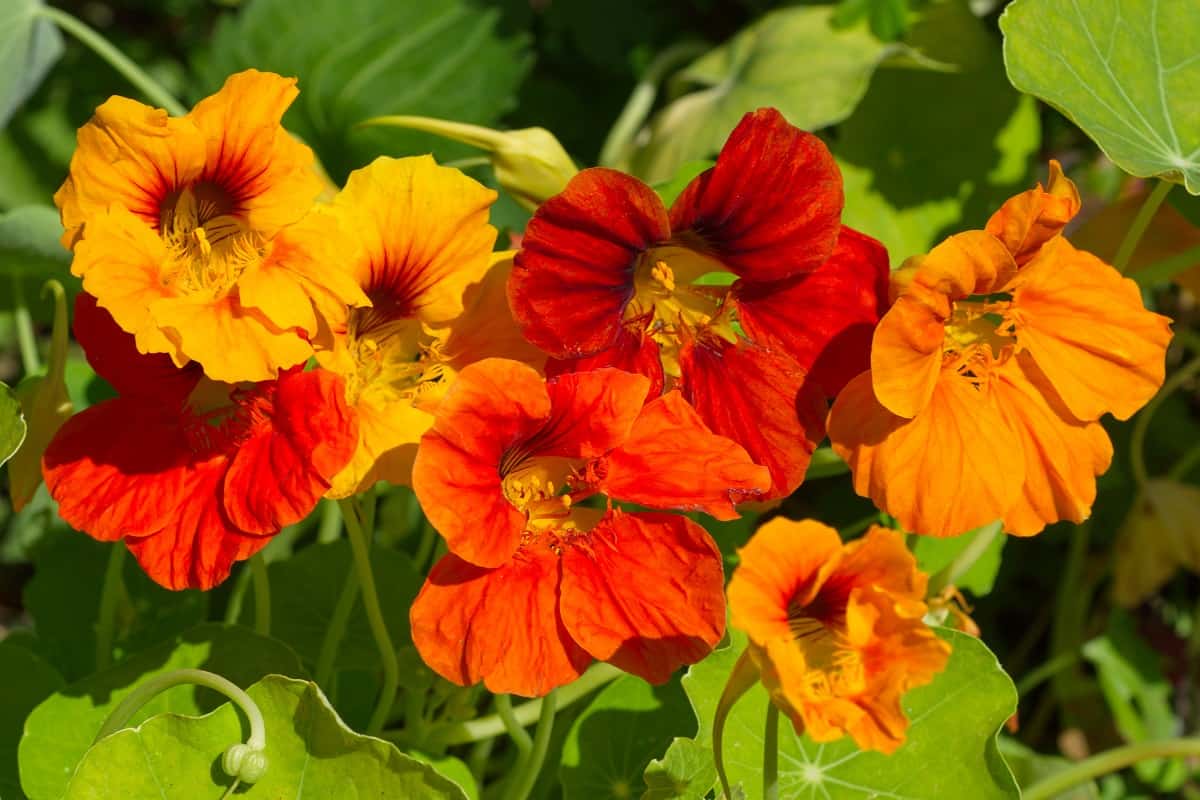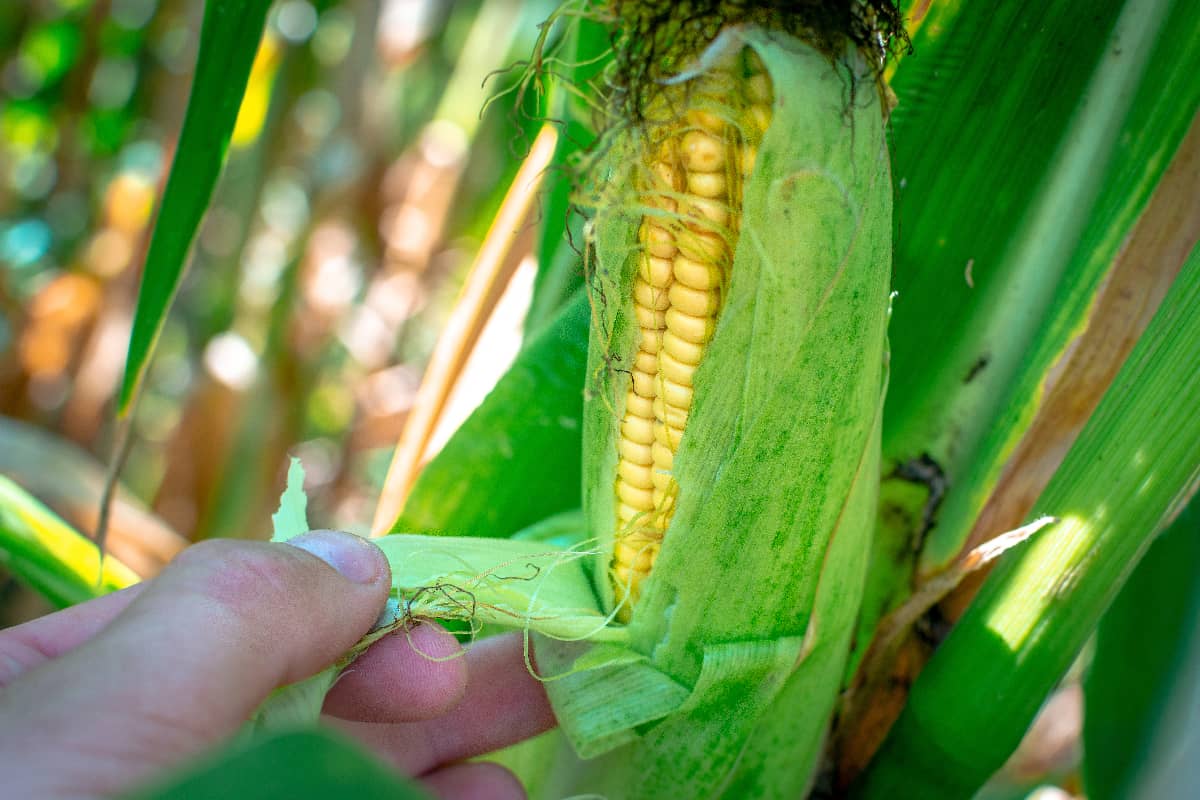Exciting news for all the green thumbs out there – growing lettuce just got even more satisfying!
The secret is companion planting, a smart strategy that can supercharge your lettuce's health and productivity.
By choosing the right plant neighbors, your lettuce can grow stronger, fend off pesky invaders, and soak up more nutrients.
Sound good? Let's jump right into this article where we'll lay out the best plant friends for your lettuce.
By the end, you'll be well on your way to a flourishing, lively garden.
Best Plants to Grow Next to Lettuce

When planting lettuce, consider choosing a variety of companion plants based on their specific benefits.
Some plants, for example, can attract beneficial insects that help control common lettuce pests, while others may improve the overall growth and flavor of your leafy greens.
Understanding the specific needs of lettuce and the unique properties of various companion plants is the key to a successful co-planting arrangement.
As you begin planning your garden, be sure to take into account factors such as sunlight requirements, soil preferences, and water needs of each plant, as well as their sizes at maturity.
Proper planning and forethought will ensure your lettuce and its companions thrive together, creating an abundant and delicious garden for you to enjoy throughout the growing season.
Herbs and Flowers
Growing herbs and flowers near your lettuce can have various benefits, such as attracting beneficial insects and repelling pests. Consider planting the following:
1. Chives

As members of the onion family, chives produce a distinctive scent that's pleasant to us but off-putting to pests, making them a natural deterrent to aphids.
Additionally, the light purple flowers of chives are an eye-catching aesthetic addition to your garden.
Chives also attract beneficial insects, such as bees, which can contribute to the overall health of your garden ecosystem.
Not to mention, their fresh, onion-like flavor can be a great bonus in your culinary adventures!
2. Mint
This vigorous herb, famous for its refreshing aroma, offers more than just a delightful scent.
Mint plants exude strong oils that can help repel several pests, including aphids and flea beetles.
Their robust growth provides a kind of protective ground cover, creating a cooler, moist environment that lettuce loves.
It's worth noting though that mint can spread rapidly, so consider planting it in pots to prevent it from taking over.
3. Coriander (Cilantro)

Coriander, also known as cilantro, is a two-for-one deal in your garden.
This dual-purpose plant repels a variety of harmful insects like aphids, spider mites, and potato beetles, thanks to the strong scent it releases.
And while pests aren't a fan of this smell, humans often find it tantalizing—particularly in cooking.
Coriander's delicate white flowers also attract beneficial insects, adding an extra layer of protection for your lettuce.
4. Dill
Dill is a great companion plant for lettuce as it repels pests such as aphids and spider mites that can damage lettuce leaves.
It also attracts beneficial insects like ladybugs and lacewings that prey on lettuce pests.
Additionally, dill improves the flavor of lettuce and can help it grow more robustly.
5. Nasturtiums

Bursting with vibrant colors, nasturtiums do more than just beautify your garden.
They are a magnet for pollinators such as bees and butterflies, encouraging biodiversity in your garden.
Furthermore, they're a favorite snack for aphids and other pests, effectively distracting them from your lettuce.
This sacrificial role, paired with their ability to repel harmful insects like whiteflies, makes nasturtiums excellent guardian plants for your lettuce.
6. Marigolds
Marigolds, with their golden blooms, bring a dash of sunshine to any garden. But their beauty is just one facet of their appeal.
Marigolds release a strong scent that many pests, including nematodes and cabbage moths, find repellent.
Some varieties even produce a substance called alpha-terthienyl that can kill nematodes in the soil.
By planting marigolds near your lettuce, you're enlisting a powerful ally in the war against garden pests.
Plus, their sunny blooms are a fantastic way to add color contrast to the cool greens of your lettuce.
Vegetables and Fruits
As for vegetables and fruits, there are several good options for companion planting with lettuce.
7. Spinach

The leafy green duo of spinach and lettuce makes for a happy match in the garden.
Planting spinach with lettuce can be beneficial, as both have similar growing requirements and can share nutrients more efficiently when grown together.
Both thrive under similar conditions; they love cool weather, moist but well-draining soil, and plenty of sunlight.
Sharing these growing requirements allows for efficient use of space and resources since you can provide the same care simultaneously.
In addition, their nutrient needs are complementary, meaning they don't vie for the same resources in the soil.
This beneficial co-existence can lead to more robust plants and a healthier, more plentiful harvest.
8. Radishes
These quick-growing root vegetables are wonderful partners for your lettuce for a few reasons.
First, radishes have a rapid growth cycle and reach maturity faster than many other vegetables, making them ideal for intercropping with lettuce.
Their deeper roots help improve soil structure by breaking up compacted soil layers, thereby facilitating better water and air circulation for lettuce roots.
Moreover, radishes can help utilize garden space more effectively, filling in gaps between lettuce plants and deterring weeds.
9. Carrots

Pairing carrots with lettuce is a smart move due to their contrasting growth patterns.
Carrots, being a slow-growing root vegetable, don't compete with the faster-growing lettuce for surface area or sunlight.
They grow deep into the soil, breaking it up and creating channels for water and nutrients, which can benefit shallow-rooted lettuce plants.
Plus, since they extract nutrients from deeper soil levels, they don't vie with lettuce for food, reducing competition and promoting a harmonious growing environment.
10. Strawberries
Strawberries and lettuce can create a lush, productive garden with efficient use of space.
Strawberry plants, with their broad leaves, provide a canopy that can shield lettuce from intense sun, helping to create a cooler, more humid microclimate underneath.
This shade can slow down the evaporation of water from the soil, preserving moisture levels that lettuce plants enjoy.
The strawberries' sprawling growth habit also serves as a living mulch, suppressing weed growth and reducing competition for nutrients.
It's a beautiful and tasty combination that will add diversity and vibrancy to your garden.
Plants to Avoid Planting Near Lettuce
When planning your garden, it's essential to consider which plants should not be placed near your lettuce crop.
Certain vegetables can inhibit the growth and health of lettuce. Moreso, some herbs and flowers may not be ideal companions for your lettuce plants.
Cabbage Family
Plants such as broccoli, cauliflower, and Brussels sprouts can compete for nutrients and may attract pests that also affect lettuce.
Corn

Corn can cast excessive shade on lettuce plants, which prefer full sun or light shade. Additionally, corn can attract pests that could also harm lettuce.
Keep these vegetables away from your lettuce patch to ensure they grow healthy and strong.
Sunflowers
Their large size and root system can affect the growth of lettuce plants by competing for nutrients and water.
Keep these plants at a suitable distance from your lettuce to optimize the growing conditions and promote healthy growth.
But at a safe distance, sunflowers can provide shade to the lettuce, keeping it cool during hot summer days.
They also attract beneficial insects like bees and ladybugs that help pollinate lettuce flowers and prey on lettuce pests.
Understanding Companion Planting
Companion planting is the practice of growing plants together, often with the purpose of benefiting one or both plants.
In the context of lettuce, you'll want to know which plants can help improve its growth, health, and resistance to pests.
Benefits of Companion Planting
Companion planting offers numerous benefits to your garden:
Pest Control
Certain plants can deter pests that are harmful to your lettuce, protecting both the plant and your harvest.
For example, marigolds are known to repel nematodes that can damage lettuce roots.
Enhanced Growth
Some plants, like legumes, can fix nitrogen in the soil, thus providing additional nutrients that can improve the growth of neighboring plants, including your lettuce.
Mutual Support
Tall plants can provide shade for lettuce, preventing it from bolting or wilting in direct sunlight.
Similarly, lettuce can act as a ground cover, helping to retain moisture in the soil.
Principles of Success
To maximize the benefits of companion planting, follow these principles:
Choose Compatible Neighbors
Not all plants are suitable companions for lettuce. Understand the specific needs and preferences of your lettuce variety and select companion plants that have similar requirements.
Avoid Crowding
Give each plant enough space to grow without competing for resources. Adequate spacing will also promote air circulation, which can reduce the risk of disease.
Rotate Crops
Rotating your crops can help maintain soil health, prevent buildup of pests, and ensure that new plants have access to the nutrients they need.
Prioritize Diversity
A diverse garden is more resistant to pests and diseases, making it essential to include multiple varieties of plants in your garden.
Rounding Up Your Lettuce Friends

Lettuce is not only a versatile and delicious crop but also a friendly plant that can be paired with almost any other plant without being invasive.
It is a great companion plant for a lot of other herbs, vegetables, flowers, and plants.
By experimenting with different plant combinations, you can create a diverse and thriving garden that not only looks beautiful but also yields a bountiful harvest of delicious and healthy crops.
Just remember to avoid planting lettuce near plants that might hinder their growth.
These plants tend to compete for the same resources and may create an unfavorable growing environment for your lettuce.
By choosing the right combination of plants, you will create a healthy and productive garden while enjoying fresh, delicious lettuce all season long.
Did you learn something new from this article? you might be interested in these other topics as well:
Will Lettuce Regrow After Cutting? Find Out Today!
When to Plant Lettuce: Master the Art of Continuous Harvest for Garden-Fresh Salads!
